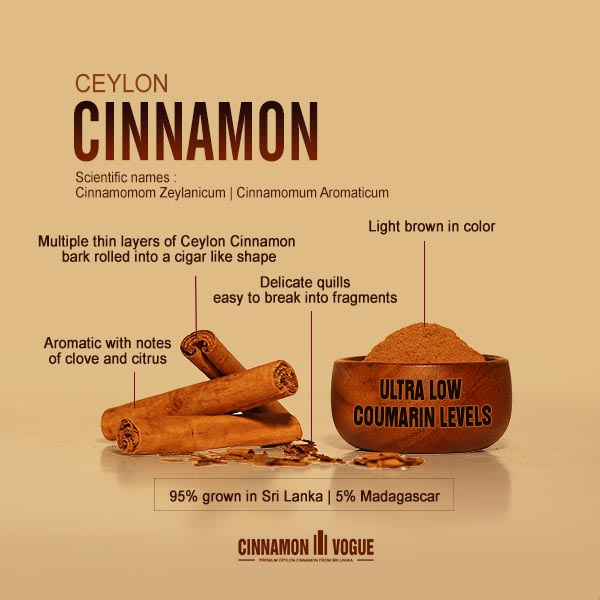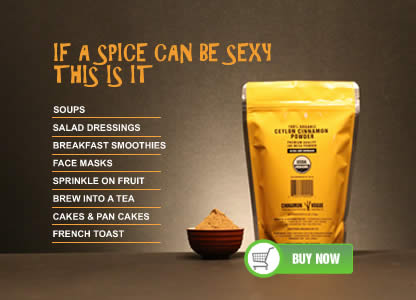

CEYLON CINNAMON
WHAT IS CEYLON CINNAMON
Ceylon Cinnamon native to the Island of Sri Lanka, is made from the inner bark of the Cinnamomum Zeylanicum tree, This bark of the Cinnamon tree is rolled into sticks, ground into powder or steam distilled into Ceylon Cinnamon Bark Oil. The leaves of the Cinnamon tree is also steam distilled to extract what is called Ceylon Cinnamon Leaf Oil. Ceylon Cinnamon is very different to the garden variety Cassia Cinnamon you get in the stores. For a detailed explanation click here.
FORMS OF CEYLON CINNAMON
Ceylon Cinnamon Sticks looks like a fine Cigar. Made by rolling multiple thin thin layers of the Cinnamon Bark (Cinnamon quills) into a cigar like shape which vary on length from 2-8 inches.
Cinnamon Powder is made from Cinnamon sticks which are ground into a fine powder. This powder is always added to Sri Lankan curry powder as well as sold on its own for making fine baked goods.
Ceylon Cinnamon Leaf Oil is extracted from the leaves of the Ceylon Cinnamon Tree through a process of steam distillation. It has high levels of Eugenol, a compound with strong anti-bacterial properties and lower levels of Cinnamaldehyde a compound that gives Cinnamon that distinctive smell. As a result Cinnamon Leaf Oil will smell harsher than the more sophisticated Cinnamon Bark Oil
Ceylon Cinnamon Bark Oil is extracted from the inner bark of the Cinnamon Tea through a steam distillation process. Cinnamon Bark oil has higher levels of Cinnamaldehyde and lower levels of Eugenol.. Cinnamon Bark Oil is nearly 4 times as expensive as Ceylon Cinnamon Leaf Oil. This is because the steam distillation process of the bark only releases very small amounts of oil. But the smell of Cinnamon Bark Oil is far superior to Ceylon Cinnamon Leaf Oil.
ORIGINS OF CEYLON CINNAMON
Ceylon Cinnamon is native to the tiny Island nation of Sri Lanka. Also called True Cinnamon, only Cinnamon grown in Sri Lanka can be considered the real thing. This is because the exact climate conditions where it grows is very unique.
Even in Sri Lanka Ceylon Cinnamon is grown only in particular areas, which is in the Negombo district, south of the capital Colombo. The major cities that produce Cinnamon are the coastal cities of Galle, Matara, Rathnapura and Hambantota.The climate in these cities gives Sri Lankan Ceylon Cinnamon its unique taste and smell. And the quality of the Cinnamon harvested in this particular region is extremely high.
While a small amount of Ceylon Cinnamon is grown elsewhere particularly Madagascar, the taste and smell of Ceylon Cinnamon grown in other countries is different. Just like Tea, True Ceylon Cinnamon needs a particular climate which was probably why it was native only to Sri Lanka.
TASTE OF CEYLON CINNAMON
Ceylon Cinnamon is very mild and slightly sweeter than Cassia Cinnamon. It has citrus, floral and clove undertones. Those who are used to the harsh and overtly spicy taste and aroma of the common Cassia will find Ceylon Cinnamon is very different. On its own Ceylon Cinnamon is almost bland but mix it with anything, especially citrus or Asian curries or fine confectionary it comes alive.
its role in many recipes is to add depth of flavor and character. In fact you would be hard pressed to know that the recipe had Ceylon Cinnamon in it. But recipes that use Ceylon Cinnamon create some of the most memorable taste sensations.
THE AROMA OF CEYLON CINNAMON
Ceylon Cinnamon is more aromatic than Cassia Cinnamon, especially when heated. It has a wonderfully sophisticated aroma. Make pancakes with Ceylon Cinnamon powder and sugar and you will know what we mean. The aroma wafts into the air.
COUMARIN CONTENT OF CEYLON CINNAMON
One of the most important characteristic of Ceylon Cinnamon is its ultra low Coumarin content (0,04%), a substance known to cause liver damage. Cassia Cinnamon by contrast has 4% Coumarin. The German and European government for example severely restrict Coumarin content. For more information on Coumarin from the German BfR click here . We also did a blog post in Coumarin in Cassia Cinnamon which you can read here.
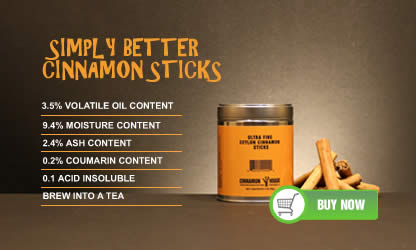
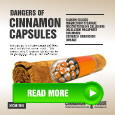 |
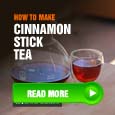 |
 |
|---|---|---|
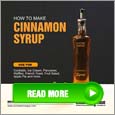 |
 |
 |
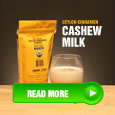 |
 |
 |
MAJOR IMPORTERS OF CEYLON CINNAMON
| Country | Total export Tons | Value in RS ml | Share from total export (%) |
| Mexico | 4773 | 2140 | 59.0 |
| Colombia | 648 | 250 | 7.0 |
| Peru | 463 | 171 | 4.7 |
| Guatemala | 204 | 97 | 2.7 |
| Ecuador | 533 | 199 | 5.5 |
| El Salvador | 108 | 43 | 3.4 |
| EU | 150 | 80 | 2.2 |
| USA | 752 | 323 | 9.0 |
*2004 figures
Mexico is the leading importer Ceylon Cinnamon. This is why it is often called Mexican Cinnamon or Canela. Many other latin countries also import a significant amount of Ceylon Cinnamon. This is because many South American countries inherited the tradition of using Ceylon Cinnamon in their cooking from Spain.
HOW IS CEYLON CINNAMON MADE
Then the outer bark and knots are scraped away to reveal a soft inner bark which is then peeled in almost paper thin layers. These are then dried. As it dries these thin slivers of bark curl up. After it is dried multiple layers of the thin bark are rolled into a cigar like stick. Click here for details on how it is made. It is soft, crumbly and easy to break into smaller pieces. However this labor intensive method of processing makes Ceylon Cinnamon much more expensive.
| GRADES OF CEYLON CINNAMON | |
| Grade | Description |
| Alba | This is a very slim Ceylon Cinnamon stick with a blemish free beautiful shape . Has an ultra refinied taste and aroma Max Diameter - 6mm, Number Quills per kg - 45, Max Foxing 10% |
| C5 Special | Slim, tightly packed layers with a deep rich color with a few surface blemishes and sweeter tasting. Max Diameter - 10mm, Number Quills per kg - 30, Max Foxing 10% |
| C5 | Slightly thicker and slightly less tightly packed than C5 special, a deep rich color with a few surface blemishes. Max Diameter - 12mm, Number Quills per kg - 27, Max Foxing 15% |
| C4 | A medium quality Ceylon Cinnamon stick, still slightly yellow.. Max Diameter - 16mm, Number Quills per kg - 22, Max Foxing 15% |
| M5 Special | Has more surface blemishes, brown in color. Max Diameter - 16mm, Number Quills per kg - 22, Max Foxing 60% |
| M5 | Rough appearance and brown in color. Max Diameter - 18mm, Number Quills per kg - 20 Max Foxing 60% |
| H1 | Made from the rough Cinnamon Bark. Max Diameter - 23mm, Number Quills per kg - 10, Max Foxing 25% |
| H2 Special | Rough in appearance and brown in color. Max Diameter - 25mm, Number Quills per kg - 9, Max Foxing 40% |
| H2 | Golden yellow cinnamon sticks. Max Diameter - 32mm, Number Quills per kg - 7, Max Foxing 55% |
| H3 | Rough in appearance and brown in color. Max Diameter - 38mm, Number Quills per kg - 6, Max Foxing 65% |
| Source - Sri Lanka Spice Council SLS-81 standard (PDF) | |
Ceylon Cinnamon tends be fragile and very delicate and very easy to break into small pieces to get its maxiumum benefits. Cassia Cinnamon by contrast is made up of one thick hard bark rolled into a cylinder like shape. At first both type of Cinnamon look similar, but lok closer and you will how hard the Cassia cinnamon sticks are.
NUTRITIONAL BENEFITS OF CINNAMON
Two Cinnamon sticks has daily values of 73% Manganese, 13% dietary Fibre, 8% Calcium. Manganese helps people with rheumatoid arthritis, Diabetes, epilepsy and many other ailments according to this article.. For detailed explanation of Cinnamon Nutrition values click here.
The FDA has not approved Cinnamon to cure any medical condition. This information is presented for informational purposes and is not intended to treat, diagnose or cure any illness. Consult a physician before taking any Cinnamon. If you are pregnant, nursing or have a heart condition you should definitely not take Cinnamon.







